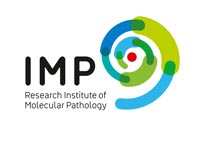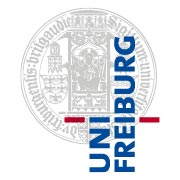Telecom-band multiwavelength vertical emitting quantum well nanowire laser arrays

Schematic diagram of vertical emitting lasing from ordered InGaAs/InP multi-quantum well nanowire arrays. Simultaneous lasing is demonstrated from one same NW array. Inset shows the vertical F-P cavity constructed from a single standing nanowire.
Credit by Xutao Zhang, Fanlu Zhang, Ruixuan Yi, Naiyin Wang, Zhicheng Su, Mingwen Zhang, Bijun Zhao, Ziyuan Li, Jiangtao Qu, Julie M. Cairney, Yuerui Lu, Jianlin Zhao, Xuetao Gan, Hark Hoe Tan, Chennupati Jagadish and Lan Fu
The integration of efficient, scalable, and cost-effective nanoscale lasers is essential for optical interconnects, medical diagnostics, and super-resolution imaging. Particularly, telecom-band NW lasers are promising for on-chip coherent light sources in photonic integrated circuits, which drive innovations in optical and quantum communication and computing. Achieving high-quality NWs with smooth sidewalls, controlled dimensions, and precise crystal composition is imperative for these applications.
However, the epitaxial growth of high-quality multi-quantum well (MQW) nanowires (NWs) with both good structural and optical properties, along with uniform morphology, is challenging. Vapor-liquid-solid (VLS) methods produce nonuniform NWs exhibit tapering and nonuniform morphologies, leading to poor optical confinement and low-quality cavities.
Selective area epitaxy (SAE) offers better control but struggles with crystallinity and defects in GaAs-based NWs, while InP-based NWs show promise for room temperature lasing. However, SAE-grown InGaAs/InP MQW NWs with wurtzite structures have morphology issues. Adjusting growth conditions can improve uniformity, but challenges like stacking faults, limited NW length, and temperature sensitivity persist. Thus, strategies for precise SAE NW growth with controlled size, morphology and high crystal quality are needed for achieving high-density NW lasers, which is crucial integrating photonic chips.
In a new paper published in Light Science & Application, a team of scientists, led by Professors Xutao Zhang and Xuetao Gan from Northwestern Polytechnical University, China and Professor Lan Fu from the Australian National University, Australia, and co-workers have developed an innovative multi-step facet engineering approach for wurtzite (WZ) based InGaAs/InP MQW NW growth via SAE method. A WZ InP NW core was firstly grown to the desired length under high-temperature and low V/III ratio conditions followed by changing the growth conditions to low temperature and high V/III ratio to promote lateral InP shell growth with a 30° rotation of all NW sidewalls(see Figure 2).
Structural and characterization of the MQW NW array. (a) Schematics of the WZ based InP NW, facet-rotated InP core-shell NW, and InGaAs/InP MQW NW, respectively. (b) 30° tilted SEM image of the NW array grown on InP(111)A substrate. (c) STEM-HAADF image of the lateral cross-section of an InGaAs/InP QW NW. The dashed blue line indicates the expected position of WZ InP NW core which is covered with the 30° rotated InP shell and MQW structure. (d) STEM-HAADF image taken along [112] zone axis from the vertical cross-section of NW top segment. Credit by Xutao Zhang, Fanlu Zhang, Ruixuan Yi, Naiyin Wang, Zhicheng Su, Mingwen Zhang, Bijun Zhao, Ziyuan Li, Jiangtao Qu, Julie M. Cairney, Yuerui Lu, Jianlin Zhao, Xuetao Gan, Hark Hoe Tan, Chennupati Jagadish and Lan Fu
This allows for the subsequent InGaAs/InP MQW growth with a well-maintained hexagonal shape and smooth NW morphology, which is critical to facilitate the formation of a high-Q factor vertical Fabry-Pérot (F-P) cavity for MQW lasing in the vertical direction. Single mode vertical emitting laser centered at 1532 nm has been achieved at room temperature with a low threshold power of ∼28.2 μJ cm-2 per pulse and a high characteristic temperature of 128 K. By tuning the indium composition of the MQWs, tunable lasing peak has been achieved from 940 nm to telecommunication O and C band.
“Through this new method of epitaxial growth, we can precisely control the diameter and length of quantum well nanowires with high crystal quality and uniform morphology. This makes it possible to design controllable nanowire optical cavities, thereby enabling the regulation of spatial modes and longitudinal modes. Then, by modulating the composition and thickness of quantum wells in the nanowires, the lasing peak position of the nanowires can be adjusted, achieving coverage of a wide spectral range in the near-infrared telecommunication band.”
“The technology we present is well-suited for large-scale epitaxial growth of uniform nanowire arrays. It will enable the batch construction of nanoscale laser light sources in the near-infrared telecommunication band. This approach has the potential to overcome the obstacles associated with traditional methods of fabricating on-chip integrated light sources through bonding or heterogeneous epitaxy, demonstrating a promising path for large-scale photonic integration,” said the researchers of the study.
Journal: Light Science & Applications
DOI: 10.1038/s41377-024-01570-7
Article Title: Telecom-band Multiwavelength Vertical Emitting Quantum Well Nanowire Laser Arrays
Media Contact
All latest news from the category: Physics and Astronomy
This area deals with the fundamental laws and building blocks of nature and how they interact, the properties and the behavior of matter, and research into space and time and their structures.
innovations-report provides in-depth reports and articles on subjects such as astrophysics, laser technologies, nuclear, quantum, particle and solid-state physics, nanotechnologies, planetary research and findings (Mars, Venus) and developments related to the Hubble Telescope.
Newest articles

Quantum researchers cause controlled ‘wobble’ in the nucleus of a single atom
Researchers from Delft University of Technology in The Netherlands have been able to initiate a controlled movement in the very heart of an atom. They caused the atomic nucleus to…

Scientists create leader cells with light
Research led by the Institute for Bioengineering of Catalonia (IBEC) has studied the migratory movement of groups of cells using light control. In processes such as embryonic development, wound healing…

‘Supercharging’ T cells with mitochondria enhances their antitumor activity
Brigham researchers develop strategy to improve immunotherapy by helping T cells penetrate and kill tumor cells. Fighting cancer is exhausting for T cells. Hostile tumor microenvironments can drain their mitochondrial…















